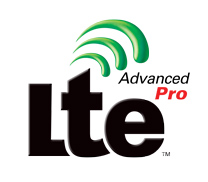CDR (Call Detail Record) is used for billing of voice calls in 4G/5G/LTE systems
What is CDR?
CDR refers to the call detail record provided by a telecom service provider. It is data containing information about system usage, documenting the details of calls or other communication transactions.It contains multiple call attributes such as identities of source and destination, the duration of each call, the billing amount for each call, the total usage time within the duration and the running total charged during the billing period.
The CDR format varies among VoIP providers or programs. Also, there are some programs which allow CDRs to be configured by the consumer.
A call detail record for a particular user account can be downloaded at the request of the account holder. If the service provider provides itemized bills to the users, a CDR will display in each bill, in a format resembling itemized long distance bills provided by conventional telephone companies. CDR billing is performed by Automatic Message Accounting and processed by Operations Support system (OSS). There may be various kinds of network elements controlling the services, in turn producing different types of CDRs.

CDR Attributes
As we have already discussed that a CDR keeps the usage information along with other usage information. Below we have listed the most important attributes of a CDR:
- Calling party
- Called party
- Call start time and date
- Call duration
- Call type (voice, SMS, data etc.)
- A unique record sequence number for identification
The proper recording of all the required information in a CDR depends on the principle of switch vendor plus the switch specific table entries. In case either of these is unable to record data accurately, the mediation system would not be able to recognize the completed calls and pass them over to the billing system.
CDR Processing
The service provider’s mediation system collects CDRs from various network elements in various formats. The network elements generate CDRs in ASN.1 format. However, some networks also possess a proprietary CDR format.
A mobile service network’s data collector captures the usage by a user in form of CDR. The collected raw CDR is converted into a format which is understandable by the billing system applying various rules by the mediation system.
Rating and Billing
Once the CDRs are collected, they are validated, normalized and consolidated. A charge for each call made is calculated identified by the details in the CDRs. The process is known as rating and unsurprisingly it is entirely carried out by a rating engine, which may be a part of the billing system or it may also be a preliminary process outside the billing system. In case of any communication transaction, the billing system adds up the charges determined during the rating for each user account, calculate balances and generate billing invoices. Following this, the CDRs finally end up on the billing invoice in the form of an itemized bill.
For Further Information
Please Contact Us
